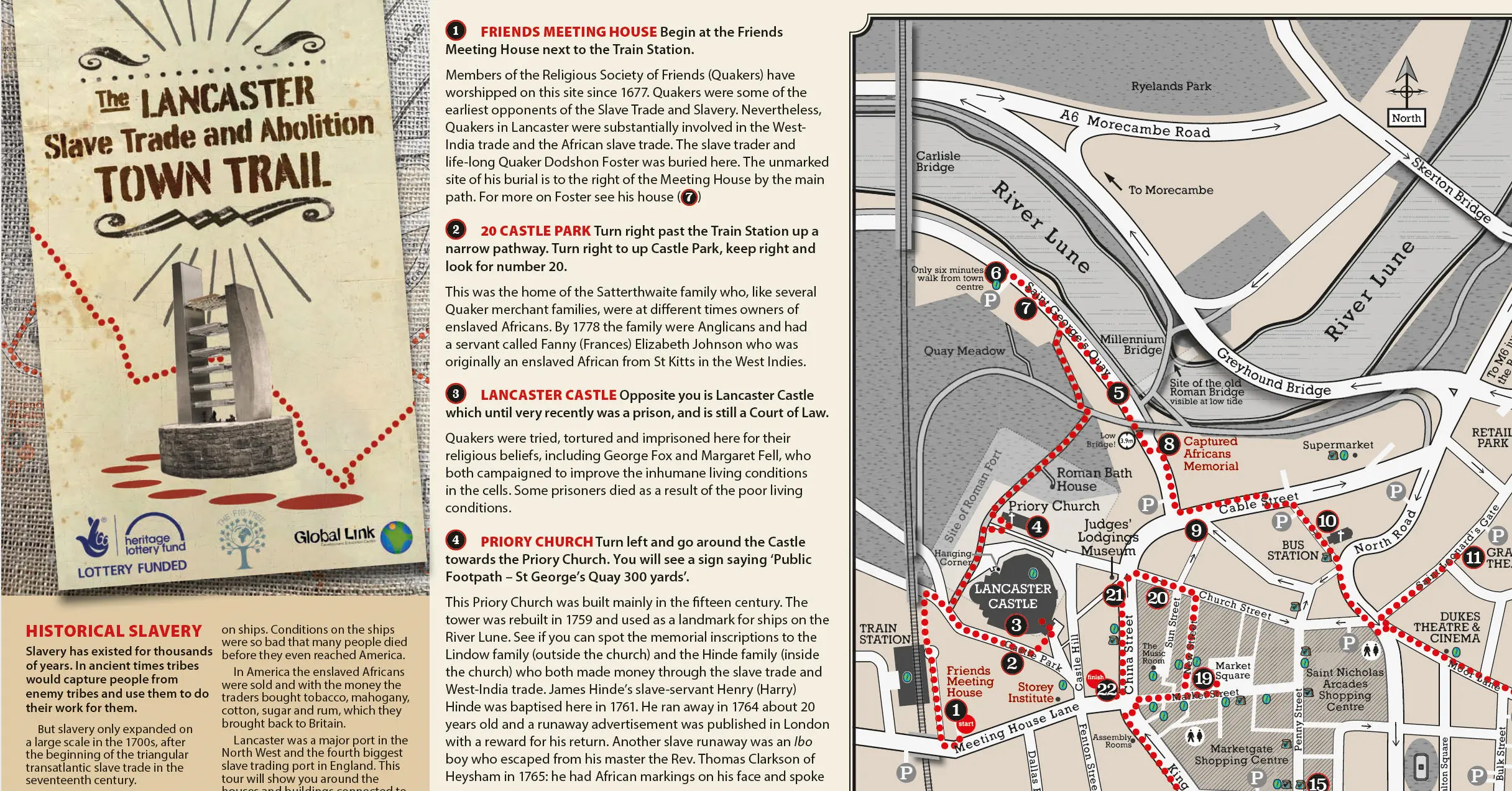UCLan’s Professor Alan Rice has revised a trail which investigates Lancaster’s link to the slave trade
A walking trail investigating Lancaster’s historical links to the slave trade has been updated thanks to a University of Central Lancashire (UCLan) academic.
Alan Rice, Professor in English and American Studies, has revised the trail to focus on the city’s link to abolition.
He said: “I’ve been running regular guided slave trade tours around my adopted city of Lancaster for the past 20 years as it’s a fascinating part of its history. I was involved in the first version, but I volunteered my expertise to update the Lancaster Slave Trade Abolition and Fairtrade Trail and decided to focus on abolition and to highlight a much greater emphasis on black people’s making of their own history.”
The walking tour, which takes approximately two hours to complete, has been produced in association with Lancaster Maritime Museum.
It takes in 20 sites, which include houses and buildings connected to the transatlantic slave trade and the campaigns for fair trade. Some of the city’s landmarks which feature include Lancaster Castle, the Slave Trade Memorial, the Grand Theatre, Gillow’s Warehouse and The Sun Inn.
Professor Rice said: “When slavery expanded on a large scale in the 1700s, Lancaster was a major port in the North West and the fourth biggest slave trading port in England.
“The three-way trade between the Americas, Africa and Europe saw manufactured goods, such as guns, shipped from Europe to Africa. These were traded for Africans who were forced into slavery and sent to the Americas on ships. Conditions on the ships were so bad that many people died before they even reached America. In America, the enslaved Africans were sold and with the money the traders bought tobacco, mahogany, cotton, sugar and rum, which they brought back to Britain.
"Africans fought back though, and the new trail tells their stories through runaway servants and visiting black abolitionist speakers"
— Alan Rice, Professor in English and American Studies
“A lot of wealth linked to the slave trade stayed within the city. Successful families owned enslaved Africans while local businessmen owned ships and profited from carrying huge numbers of enslaved Africans. Africans fought back though, and the new trail tells their stories through runaway servants and visiting black abolitionist speakers.”
The project was funded by UCLan’s Research Centre on Migration, Diaspora and Exile and 5,000 printed copies of the new trail are available from Lancaster Maritime Museum, Judges’ Lodgings and Visitor Information Centre, with a donation going to the Museum or Lancaster Black History Group.
The Museum’s Facebook page includes a selection of Professor Rice’s videos about certain landmarks while Lancaster Black History Group is looking at developing a child-friendly version of the trail.
The updated trail also ties in with fellow UCLan academic and Turner Prize winning artist Professor Lubaina Himid’s Memorial to Zong exhibition, which will be on display at the St George’s Quay based museum once Covid-19 restrictions are lifted.
Mel Cookson-Carter, Manager of Lancaster Maritime Museum, said: “Continuing to tell the stories of the enslaved is such an important part of what Lancaster Maritime Museum’s role is. Lancaster’s history is fascinating, and the trail looks to unmask its darker face. It is a really thought-provoking tour of the City and through the work of Global Link the long and continuing fight against slavery can be continued. We are proud to be part of the project.”
The trail can also be accessed online on the Explore Morecambe Bay and Global Link websites.

